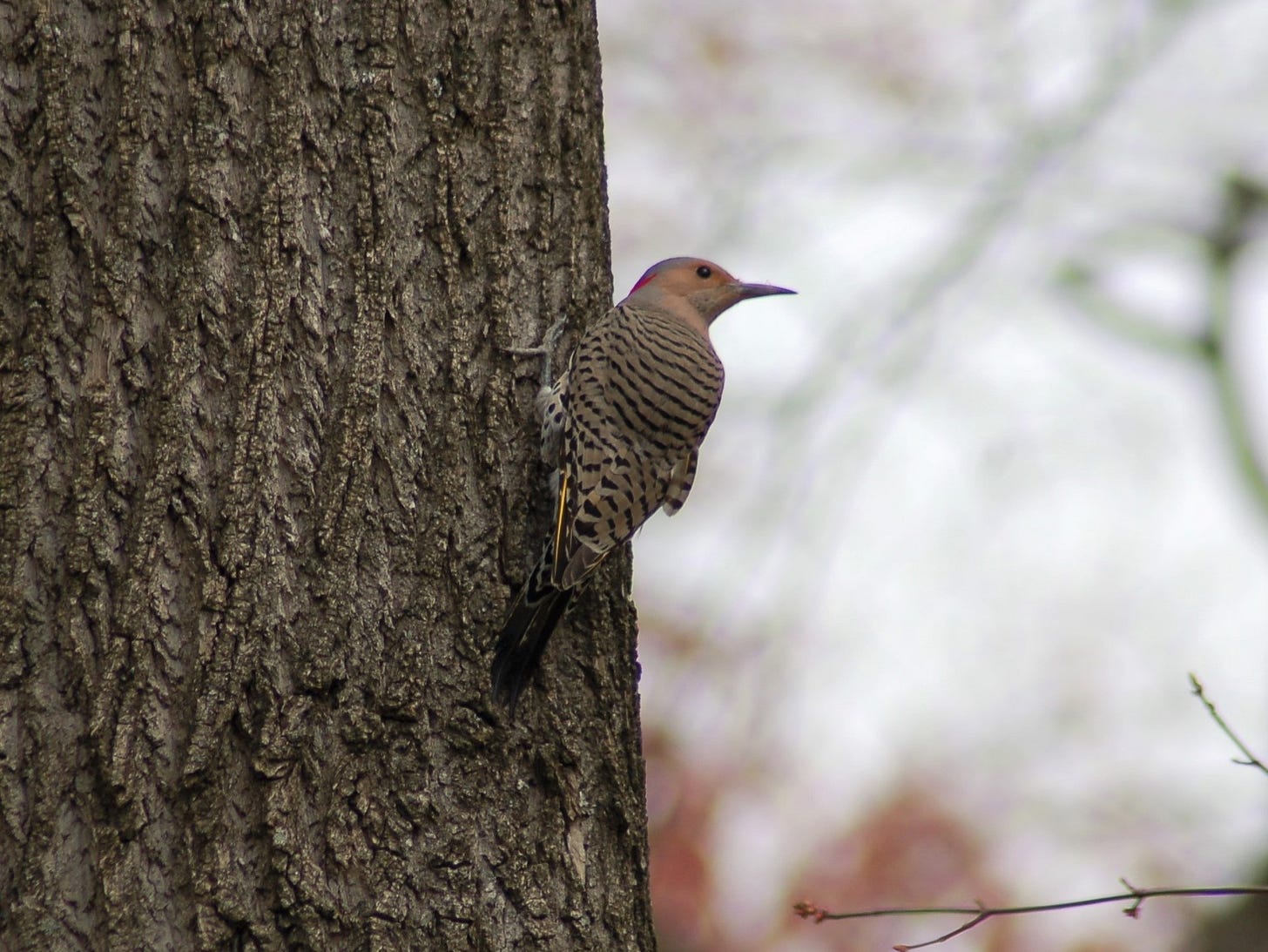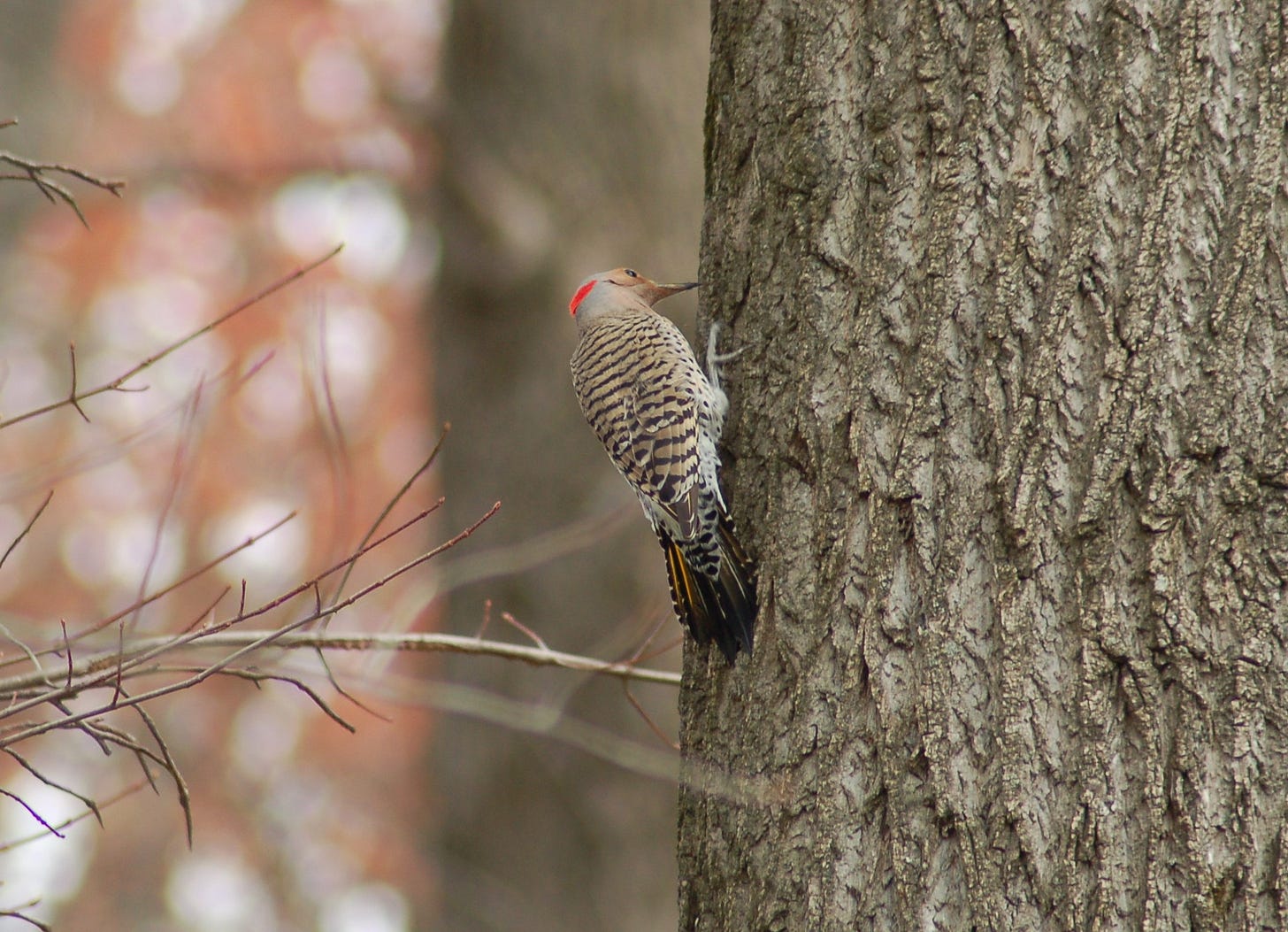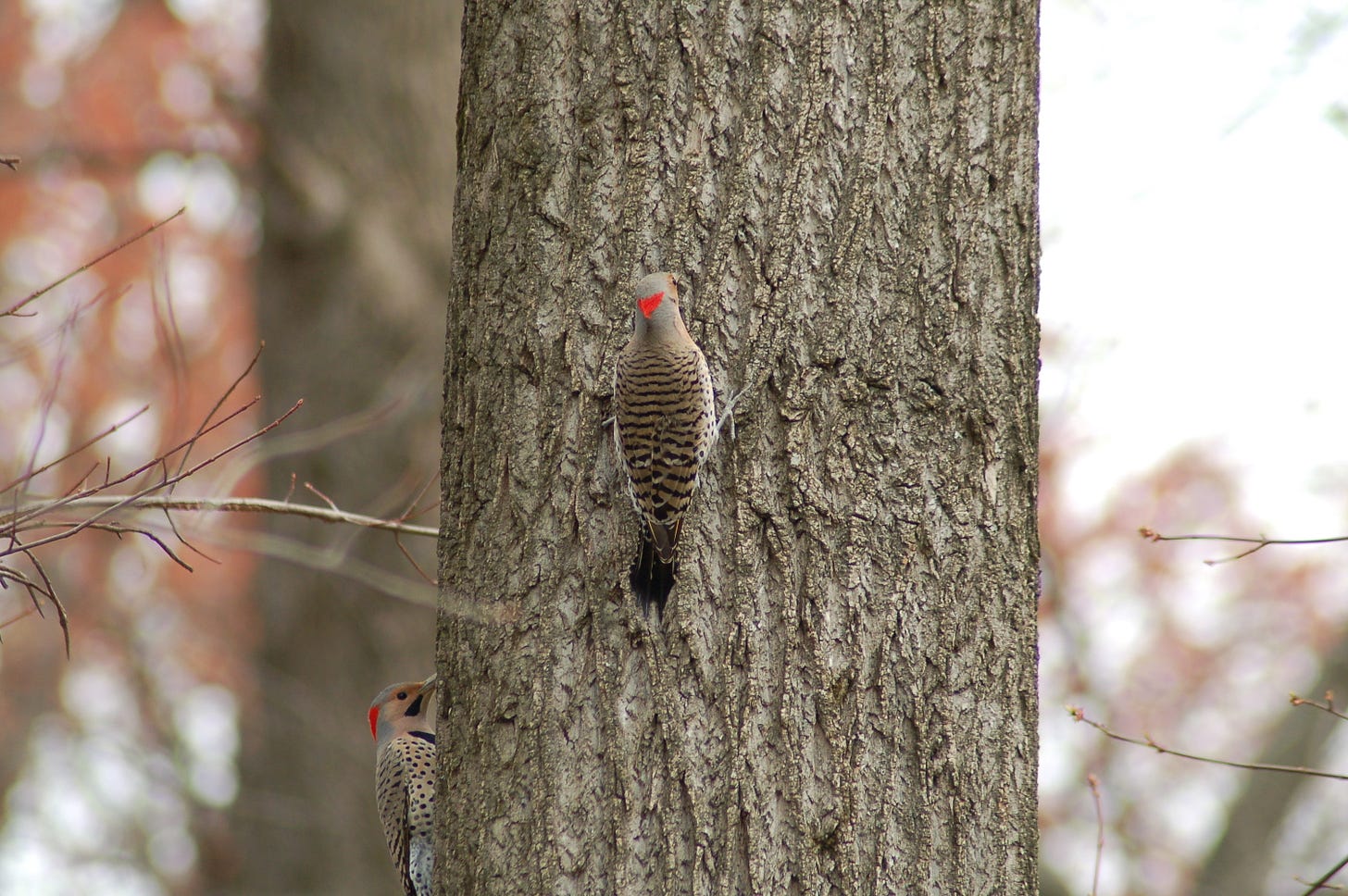Return and Dance of the Northern Flicker
With spring comes both birds and territorial conflict...
They both freeze, staring at each other. Their eyes lock, the air between them thick with tension. Who will move first? Who will back down? A small bit of trash tumbles across the ground in the wind. The theme song from A First Full of Dollars starts playing. Does one of them draw a gun? Do they turn around and count to ten? No, they start bobbing their heads side-to-side! These are no cowboys at high noon, these are Norther Flickers dueling over territory and potential mates.

The scene I described above was an aggressive showdown between two female, yellow-shafted Northern Flickers (thankfully sans any actual trash on the ground). I was lucky to witness this event, although I didn’t know what it was at the time. While out for a walk, I saw a grand total of four flickers (two female and two male) all chasing each other around trees and flying around. They were very active and I eagerly studied the photos I took, trying to decipher what I saw. It was an especially fun and hilariously bizarre spectacle—the pair of females on a branch would spend a few quick seconds bobbing their heads with great intensity and then spend a several longer seconds completely frozen while staring at each other.

Spring is a special time for birders as many of our feathered friends return from the south and display all kinds of neat and weird behavior. This includes both mating dances and aggressive displays of flapping their wings to appear big and scary. According to Connecticut College Professor Emeritus of Biology Robert Askins, “Two female flickers [can] display aggressively near a nest cavity while a male watches passively. During high-intensity territorial displays, flickers face one another and bob their heads. At the same time they reveal the bright yellow on the underside of the wings and tail by raising the wings and spreading and twisting the tail.”

If the above GIF is too shaky, check out this video on YouTube to get the idea. The dance is similar to the mating one, but meant to scare rather than seduce. You can tell that the above two Northern Flickers are females because they lack the moustache of the male birds. Flickers in the Eastern half of the United States also have yellow feathers in their tale and so are “yellow-shafted” as compared to the red-feathered, “red-shafted” variety found on the West coast.

Have you ever witnessed any strange bird behavior? Your fellow readers of Bird Time! want to know. So please email back to share any neat avian activity you’ve seen this spring.
Until next (Bird!) time,
Grover



